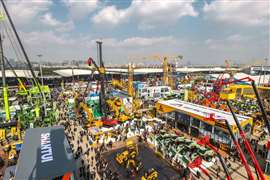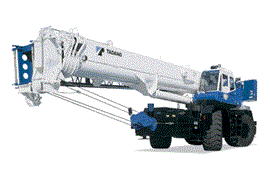United's new leader
19 March 2008

ALH: United is already the world's biggest equipment rental company, so where do you see further growth coming from?
MJK: From an operational standpoint, we have numerous avenues for growth. The North American marketplace is still under–penetrated when it comes to equipment rental; industry sources estimate less than 40% penetration in the construction sector. Some of the most exciting opportunities exist within the government sector and industry. We announced in May that United Rentals has earned GSA status, which allows us to do business with branches of the US government.
Private manufacturing and industry have been even more prone to owning their own equipment. This is partly a habit, and partly due to labor agreements that constrain certain types of change. We have seen many situations where a change of where competitors are, where opportunities are. They can help grow the company.
ALH: Right now, your fleet mix is about 40% aerials. Do you intend to keep that percent intact as you make future fleet investments? MJK: We try not to make assumptions about future fleet mix until the capital investment period – that's when demand is analyzed. The mix really is determined by the needs of our customers. What I can tell you is that we are very comfortable with access equipment accounting for about 40% of our fleet at this time. Aerial was one of the top performing regions in our company in 2006. This looks like it will be another strong year. It's a business where scale matters; we are often asked to provide 50 or more lifts to large projects that require months or even years of construction.
ALH: what future opportunities do you see for rentals? Will you look at expanding l markets overseas?
MJK: We have always been open to attractive portunities beyond our current markets, we are not actively pursuing them at As I mentioned earlier, there is plenty to be found in our own backyard. United tals has had an aggressive and highly cold start program in place since 2005. We hed more than 70 new branches in the ars and plan another 30 to 35 openings December.
ALH: what is the overall operating ent like in North America?
MJK: Every indication is that United Rentals and the customers we serve will be operating in a posltive construction environment for some time We constantly take the temperature conditions in our regions, and we're very ortable with what we see at this point. We have reasonable visibility through 2007 2008, with a number of large project ents in place.
ALH: o construction spending is still g?
MJK: Our primary market in the US and a is private non–residential construction. This market spent 15.6% more in the first rter compared with first quarter 2006. expectation is that spending will continue to increase this year, and in fact through 2008, although we do agree with industry analysts who feel that the growth rate will likely moderate.
Within private non–residential construction, we have seen the strongest demand for equipment come from the retail, manufacturing and healthcare sectors. These are the same sectors that drove market demand last year – not only with new construction, but also equipment used for facility expansion, refurbishing and maintenance. Residential construction, on the other hand, has been weak to moderate at best in the States. Homebuilding is a secondary market for us, but we do see the impact in areas such as southern California where we have a high concentration of branches that serve those contractors.
ALH: You recently announced that you plan to increase your capital expenditures in rental fleet this year, beyond the original plan. What prompted that decision?
MJK: We purchased US$265 million of fleet in the first quarter, about 30% of our rental capex plan. Most of this fleet was absorbed into our branches by mid–March when we began to see time utilisation trend upwards. During April time utilisation was up more than two percentage points year over year.
Given our confidence in the current operating environment and our visibility into 2008, we decided in May to increase growth capital by another $50 million this year. When we improve time utilisation on an expanded fleet, as we are doing now, it indicates that there is a strong, underlying demand for our equipment. Our focus, as always, is on our customers and our ability to meet their needs.



